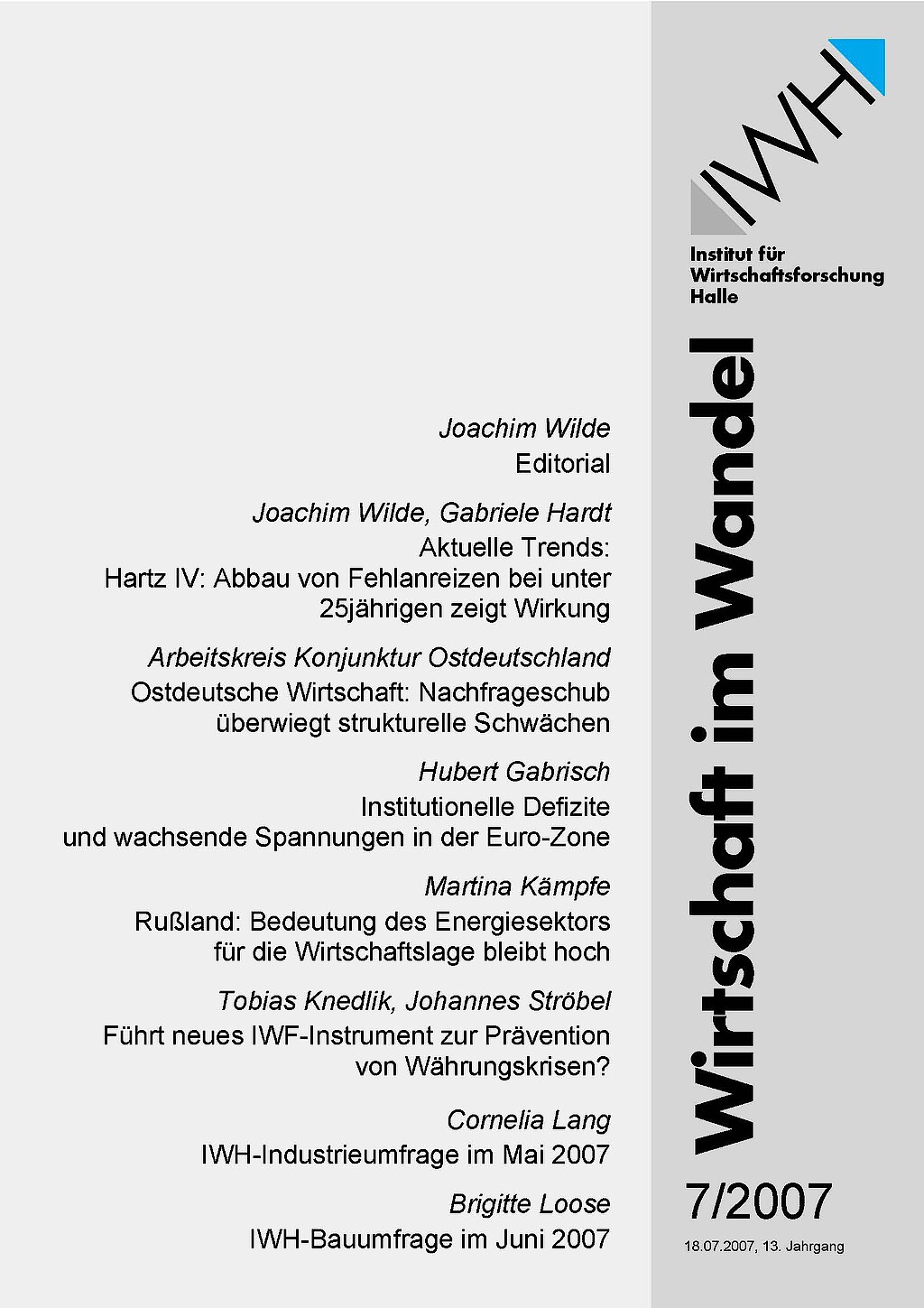in: Wirtschaft im Wandel,
No. 7,
2007
Hinter dem Erfolg der Einführung des Euro verbergen sich erste Zeichen für zunehmende Asymmetrien und Ungleichgewichte in der Euro-Zone, die langfristig die Stabilität der gemeinsamen Währung unterminieren können. Spannungen zeichnen sich angesichts der Lähmung der Fiskalpolitik, der Divergenz der Pro-Kopf-Einkommen, extremer Schwankungen der Immobilienpreise und divergierender Lohnstückkostenentwicklungen ab. Die bestehenden Formen der makroökonomischen Koordination sind offensichtlich nicht ausreichend, diese zu verhindern. Offenbar können Länder nach dem Wegfall der Wechselkurse und der Einschränkung der fiskalpolitischen Instrumente nur noch über die Lohnpolitik in Wettbewerb miteinander treten. Insbesondere Deutschland und Österreich waren hier erfolgreich, im Gegensatz zu Ländern wie Spanien, Griechenland, Portugal, Italien und mittlerweile auch Frankreich. Für Deutschland kann auch konstatiert werden, daß die Wirtschaftspolitik erfolgreich war, durch Arbeitsmarktreformen und durch indirekte Steuern die Arbeitskosten stärker als andere Länder zu senken. Der erworbene Vorteil ist jedoch trügerisch, denn Länder mit hohen Lohnstückkosten und steigenden Handelsdefiziten sind früher oder später gezwungen, im Lohnwettbewerb nachzuziehen. Bei einer Euro-Inflationsrate von ca. 2% kann Lohnkostenwettbewerb Deflation und Arbeitslosigkeit zur Folge haben. Soll die Stabilität des Euro nicht auf längere Frist gefährdet werden, ist auch über neue und effektivere Formen der Koordination nachzudenken. Zu diesen gehören nicht nur die Einführung eines anti-zyklisch wirkenden zentralen EU-Haushalts, sondern auch Formen der direkten und indirekten Koordination der Lohnpolitik. Wie die Fiskalpolitik sollte die nationale Lohnpolitik an das gemeinschaftliche Interesse gebunden werden.





